For those of you who know The Wife personally, or are regular readers of this blog, you’ll know that she has an issue with substance abuse.
If you don’t know her that well, let me present to you: Exhibit A, Exhibit B and Exhibit C.
Symptoms include pupil dilation, heavy breathing, sweaty palms and a persistent inner voice that whispers: “Take my money, please.”
It’s not a serious problem though, and episodes occur infrequently. Over time, I’ve learnt to live with it and accept her for who she is. After all, we all have our flaws (myself included) and no one is perfect.
The most recent incident happened while she was scrolling through her Facebook feed. A food blog that she follows was promoting a limited-edition care package featuring all things yuzu (ゆず), and she innocently asked me to take a look.
(PSA: If you ever decide to follow Just One Cookbook, be careful, Nami is a very dangerous person.)
The outcome was inevitable, and so I leaned into it and bought it for her as a present. About a month later, the box from Kokoro Care Packages arrived, with a Japan Post label on its cover.


The 28cm x 17cm x 8cm box was smaller than I expected and contained an information booklet and exactly six items, all carefully packaged and nestled on a bed of dried straw.
In the booklet, there was a general introduction to yuzu, followed by specific descriptions each item, including manufacturing details and back stories of each individual producer.
It also contained suggested uses for each item, as well as a couple of suggested recipes (Chicken Nanban and Yuzu Sherbet). Overall, it was a thoughtful and well put together booklet.
The items in the care package included:






- Shinshu’s Yuzu Tartar Sauce (Producer: Shinshu Shizen Okoku, Prefecture: Nagano)
- Yuzuka a.k.a. powdered yuzu zest (Producer: Kushino Farm, Prefecture: Oita)
- Yuzu Sencha (Producer: Kenichi Natural Farm, Prefecture: Nara)
- Yuzu Syrup (Producer: Vegetable Park, Prefecture: Nara)
- Yuzu Kanten (Producer: Besshiame Honpo, Prefecture: Ehime)
- Yuzu Miso & Nori Arare a.k.a. rice crackers (Producer: Kuramaan, Prefecture: Kyoto)
The first item The Wife opened was Shinshu’s Yuzu Tartar Sauce, which we used as a condiment for the lovely onion rings from our neighbourhood burger shop, Ordinary Burgers.
We were expecting the yuzu flavour to dominate, but the citrus peel harmonised with the other ingredients, which included egg yolks, rapeseed oil, apple cider vinegar, honey, pickled rakkyo (Japanese scallion), salt and spices.
It was a bit too mild for our taste, and The Wife sprinkled on some of the Yuzuka, which greatly enhanced the yuzu-ness of the dip.




In addition to eating it with onion rings, we also had it with the wonderfully good value-for-money chicken karaage from Don Don Donki. It helped cut the greasiness of the fried chicken, and complemented the heavily-seasoned chunks. Definitely a good pairing.
The Wife also made some Japanese-style potato salad using both the tartar sauce and yuzu zest, which also turned out to be a successful match. The next time we’re back in Japan and happily wandering the depachikas, we’ll definitely keep a lookout for both bottles.
Yuzu Sencha was the next item that we opened, and the pouch contained three separate tea bags. The brewing instructions came with three different suggestions, two for hot brews and one for a cold brew.


We started with the more complicated two-step hot brew, which required one tea bag to be first brewed in 140ml of 95°C hot water for 1 minute, followed by a second brew using 140ml of 95°C hot water for 3 minutes.
It all seemed a bit too precise, but thankfully, I already had my trusty pourover coffee equipment, including a timer scale and temperature-controlled kettle. Which allowed me to easily, and exactly, follow the instructions, down to the last ml, °C and second.
Was it overkill? Yes. But since I already had the right gear, why not?
The first brew was slightly darker than the second, but both were very light tasting. There was a discernable scent of yuzu, but finding the flavour was a bit more elusive. If we didn’t already know that we were drinking yuzu sencha, we probably would have struggled with identifying the citrus note.

Our second try was the cold brew, which required one tea bag to be immersed in 300ml of water at 5 °C for at least an hour. I measured out exactly 300ml of room temp water and left the bottle sitting in our fridge overnight.
Since I was feeling atas, I poured the cold brew into a wine glass. This time, the yuzu scent was very faint, likely due to the much lower temperature.
The colour was quite nice, almost like a young Sauternes. Taste-wise, the hint of yuzu was slightly stronger than the hot brew, but only just slightly. Would we actively search for this sencha next time? Probably not.

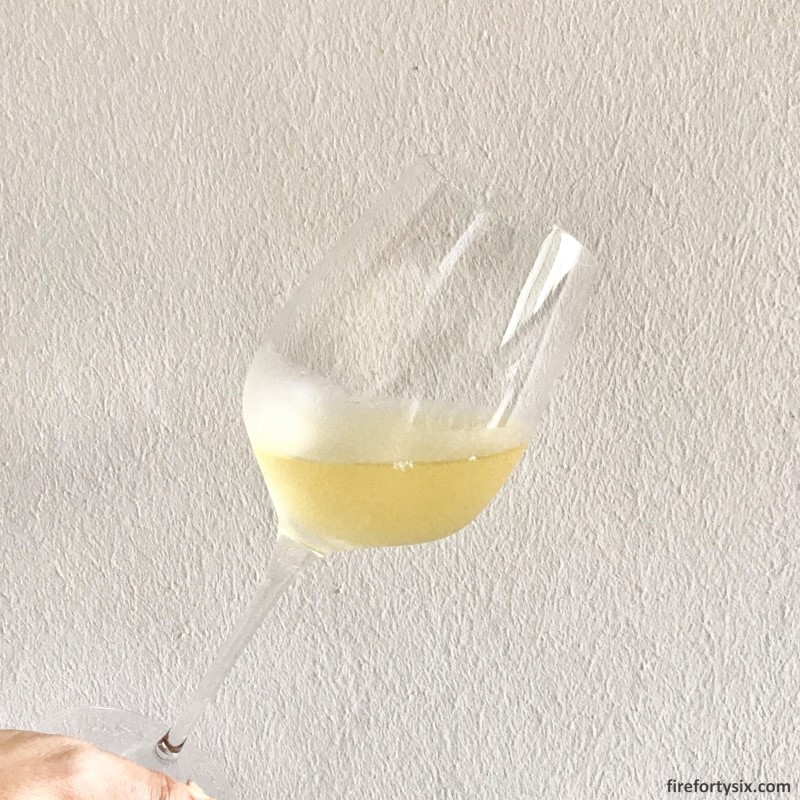
We had the Yuzu Miso & Nori Arare together with the hot sencha, and similar to the tea, we struggled to locate the yuzu flavour. It could have been present, but if it was, it was totally dominated by the taste of shoyu and nori.
The information booklet stated: “You’ll notice the distinct yuzu flavour and aroma as you chew and how it blends perfectly with the miso and seaweed.”
Ok… maybe we weren’t chewing it right, but the yuzu remained hidden throughout our mastication. Having said that, it was a perfectly decent rice cracker.
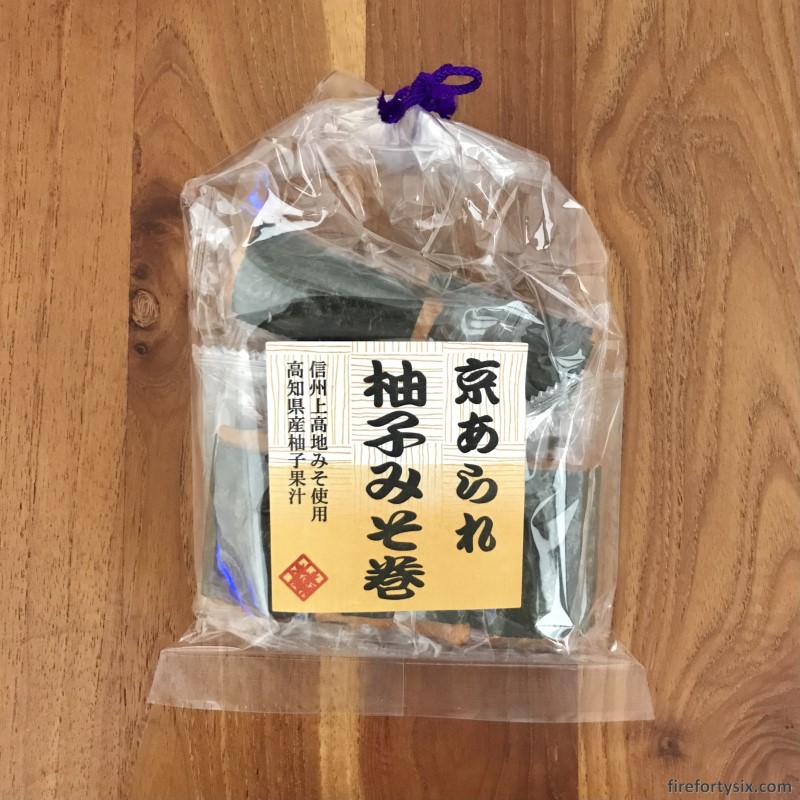



The Yuzu Kanten was paired with the cold sencha, and this time, the yuzu shouted out loud and clear. Kanten, by itself, is totally flavourless, making it the perfect base to showcase the yuzu.
Our only gripe was how little of it there was. Notice the relative size of the block of jelly vs the one Singapore dollar coin. I guess that, sometimes, good things come in small packages.
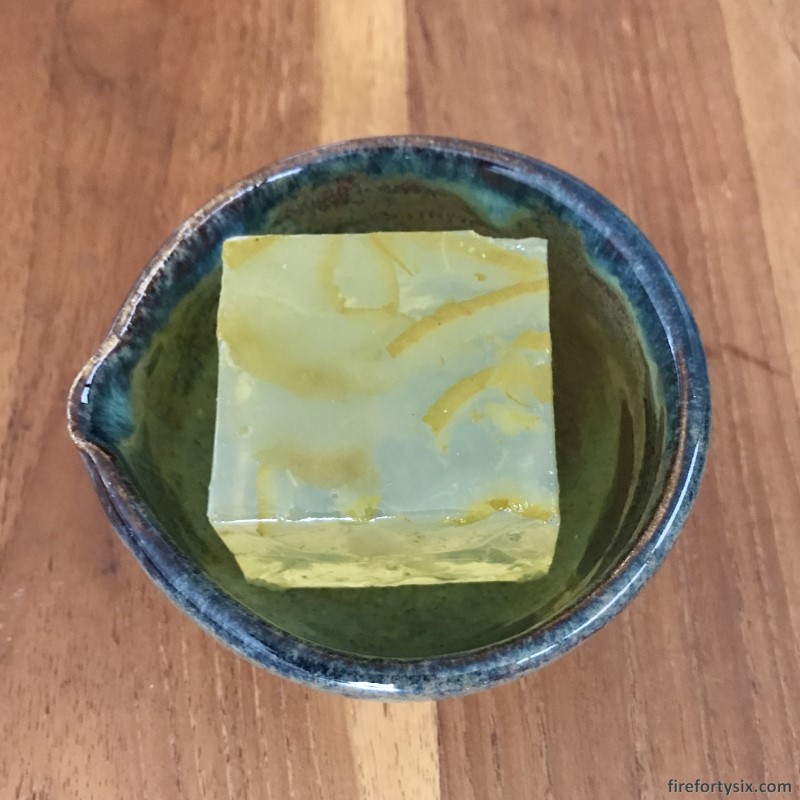
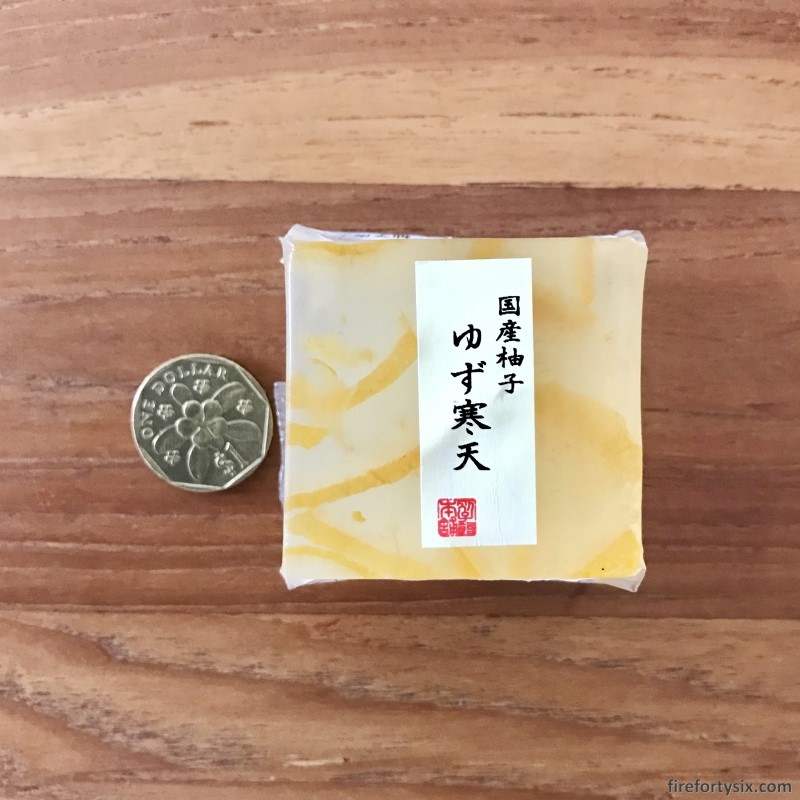
The very last item we had was the Yuzu Syrup, which also came in a small bottle. I followed the suggested preparation method exactly (thank you again, my trusty timer scale).
To make a refreshing beverage, dilute 5 parts (1 part of this product to 4 parts of flat or sparkling water)... Shake well before using.We had some sparkling water in the fridge, so I opened a bottle, weighed out precisely 4 parts to dilute the 1 part syrup that was in the glass and stirred everything up. I was expecting the final cup to be very sweet, but it turned out perfectly — not too concentrated, and not too diluted.
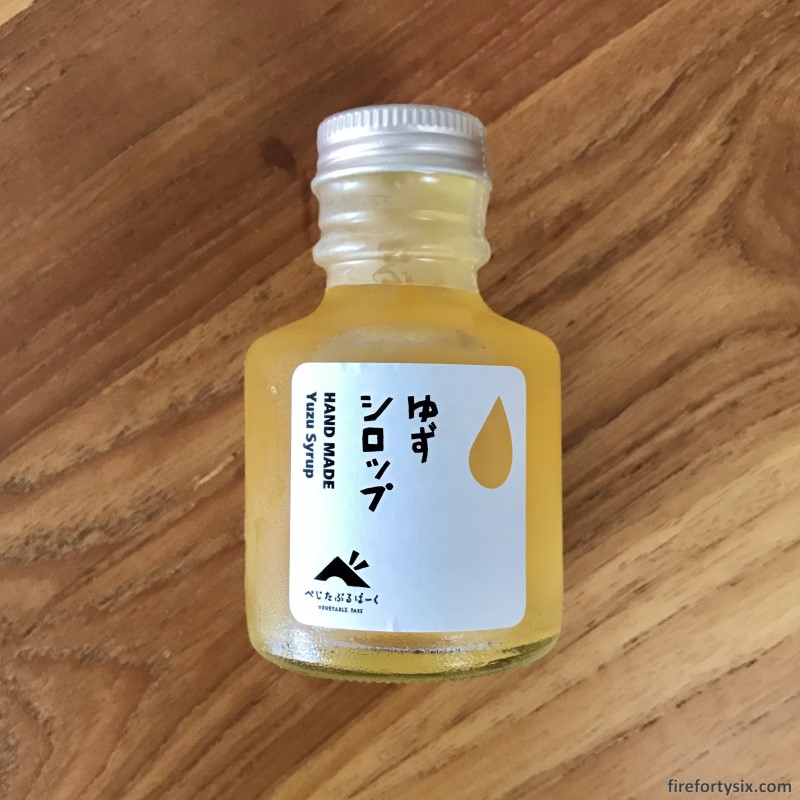

The taste was actually quite similar to our favourite yuzu sake from Umenoyado, except without the alcohol. We managed to make another two glasses of the delightful yuzu soda from the remaining syrup, and thoroughly enjoyed it.
Together with the tartar sauce and dried peel, this syrup was definitely going on the must-find list the next time we’re in Japan.

Interestingly, it’s made in Nara, which co-incidentally, is where Umenoyado’s brewery is located. Looks like the next time we’re in Kansai, we definitely need to make a day trip out to Nara to stock up on various yuzu products.
The Wife was sad when we finished off everything from the yuzu care package, but was happy that she got to try out so many different items. Even though not all of them were fantastic, the experience of a pseudo yuzu omakase experience was, in her eyes, priceless.
I think this should feed her yuzu addiction for a while, before the withdrawal symptoms start kicking in. Let’s hope that doesn’t happen too soon.
